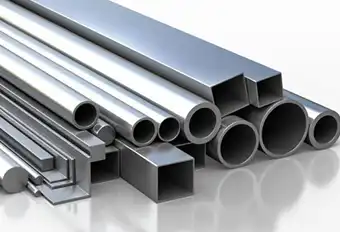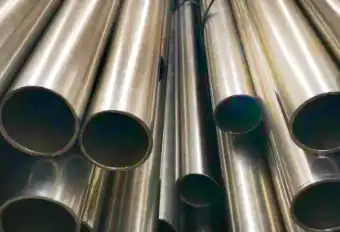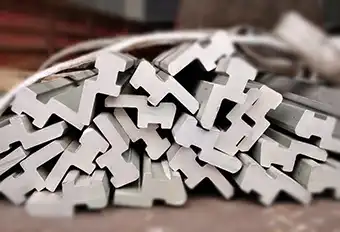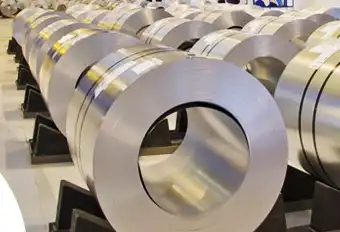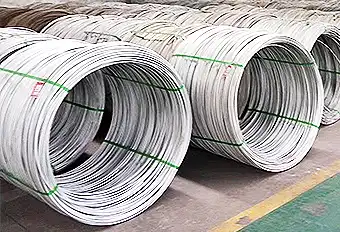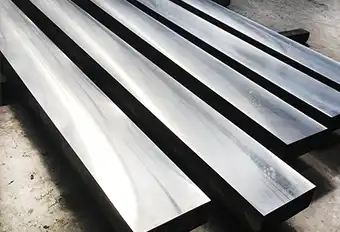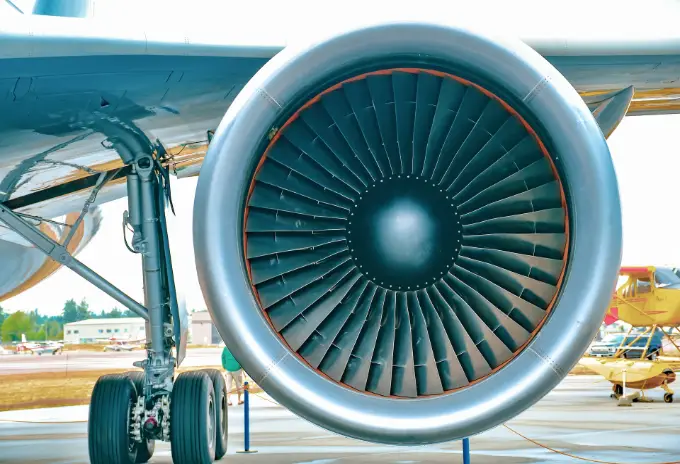Since most blade failures are due to fatigue, adequate fatigue strength is a crucial property. The blades are under steady centrifugal stress while operating, and this must be incorporated into the fatigue strength considerations. Since LP turbines can see wet 'aggressive environments', the fatigue strengths upon which designs are based must account for environmental degradation.
Material damping is also considered of high importance. The vibratory stress developed in a turbine blade is inversely proportional to the damping. One of the reasons 12% Cr stainless steels are so widely used in blades is due to their superior material damping.
Notch sensitivity also affects fatigue response and, since stress concentrations are unavoidable, particularly near the root, a low notch sensitivity is very desirable for good blade life. Unfortunately, whereas high tensile strength desirably increases fatigue strength, it also increases notch sensitivity.
The short blades in the HP turbine work at temperatures near to the maximum steam temperature, so creep strength is vitally important in this region, with the amount of permissible creep usually restricted to 0.2% deformation in 100 000 h.
The conventional 12% Cr steels have an ideal set of properties for turbine blading as long as the temperature does not exceed about 480°C. Austenitic steels have been tried but, in general, have not been satisfactory, except for the short blades in the HP turbine where damping capacity is not as crucial as it is for the longer blades in the later stages of the LP turbine. Austenitic steels, however, have relatively high coefficients of expansion and tend to be avoided because of this. Ferritic steels of the FV 520 type have been used for last-stage LP blading but have now been generally superseded by steels such as FV 566, which were designed for applications where good impact properties are required at medium-to-high strength levels. Mechanical properties have been improved by the addition of molybdenum and vanadium, and suitable heat treatments to give adequate creep resistance in the short high temperature blades, and adequate proof strength in the long low temperature blades. All steels of this type require the addition of an austenite-forming element to prevent the formation of zones of delta ferrite in the material. Nickel is employed for this purpose but its content is limited in high temperature blades because higher percentage additions reduce creep strength. The addition of niobium to the 12% Cr Mo V steels increases stress rupture strength and creep strength in the short term, but the strengthening effect falls off with time so that the long term properties are no better than those of the 12% Cr Mo V steels without niobium.
Typical British steels for high temperature blading include FV 507, a ferritic casting alloy with good tensile and creep properties combined with low thermal expansion, and Esshete CRM 12 from British Steel, a heat treatable martensitic 12% Cr steel alloyed with molybdenum and vanadium. Both these alloys have good long term creep strength at temperatures up to 650°C.
The intermediate blades, which are neither highly stressed nor very hot, can be made from 12% Cr steels with leaner alloying content and heat-treated to the appropriate hardness. A typical steel is FV 448, an 11% Cr, 0.6% Mo, 0.25% V, 0.3% Nb steel with good creep resistance up to 550°C.
The corrosion and scaling resistances of the latest so-called 'Super 12% Cr' steels are at least equal to those of the simple 12% Cr steels and in many cases significantly better. General corrosion resistance in steam is better than the grades containing less than 12% chromium: the ferritic grades are much less prone to stress corrosion cracking than the austenitic steels.
Welding is considered the most complicated fabrication process for the Super 12% Cr steels because of their high hardenability. The martensite formed in the weld metal and heat affected zone (HAZ) is hard and brittle and must be tempered. However, when temperature recommendations outlined by the various producers of Super 12% Cr steels are followed, welding does not present any unusual problems.
Information concerning production, constituents, properties and application of the Super 12% Cr steels is given in.
sales@steel-grades.com

